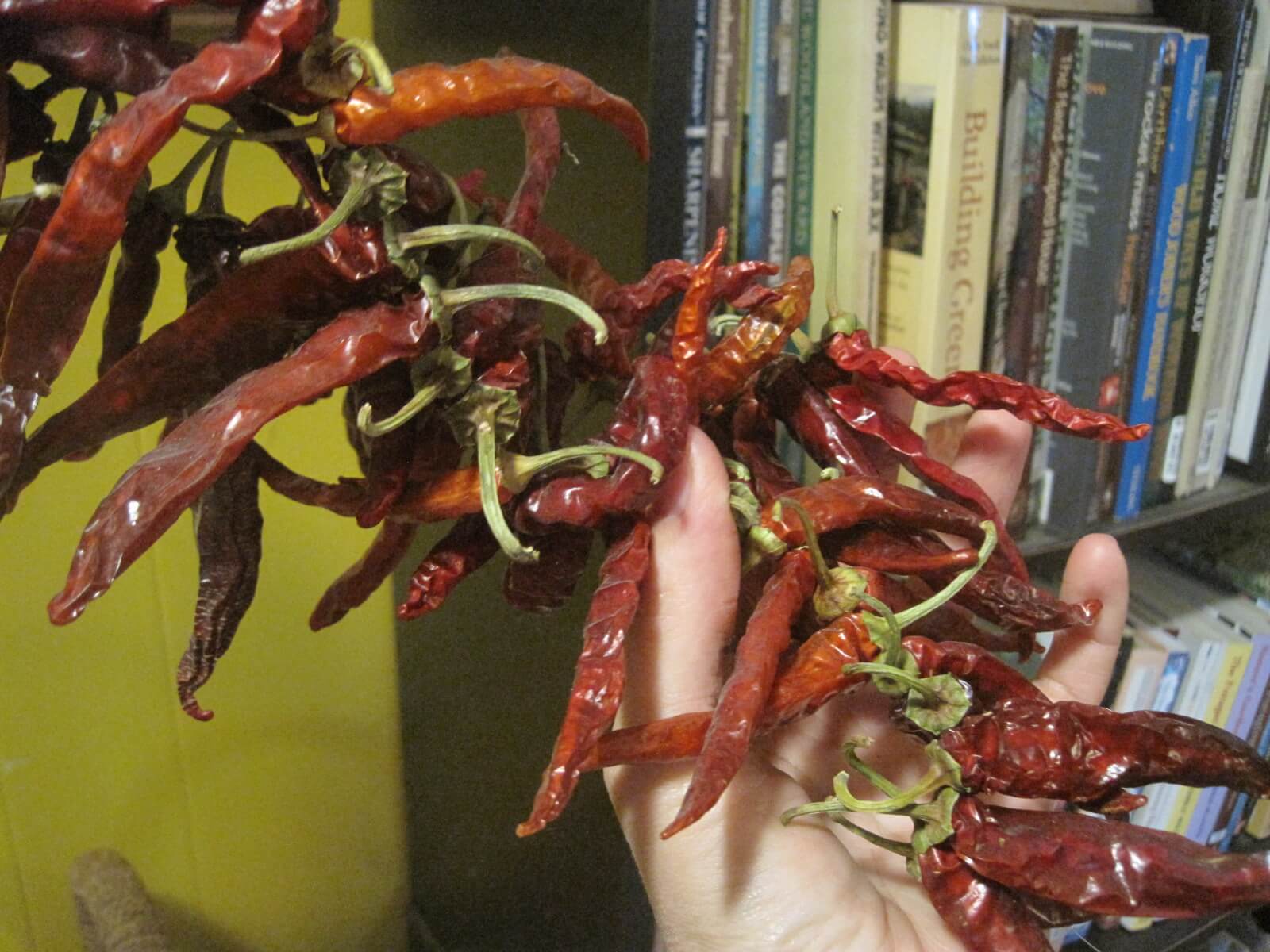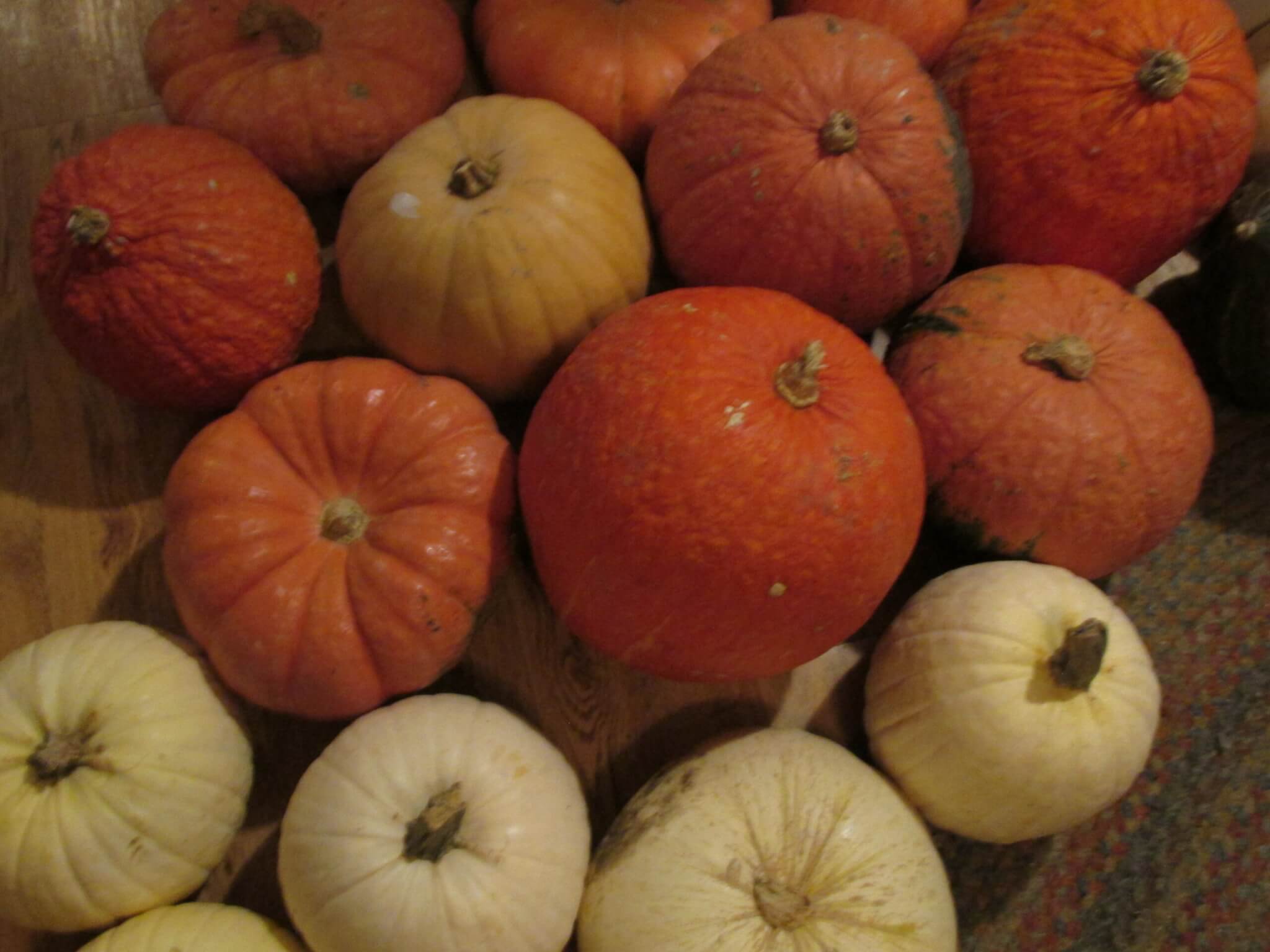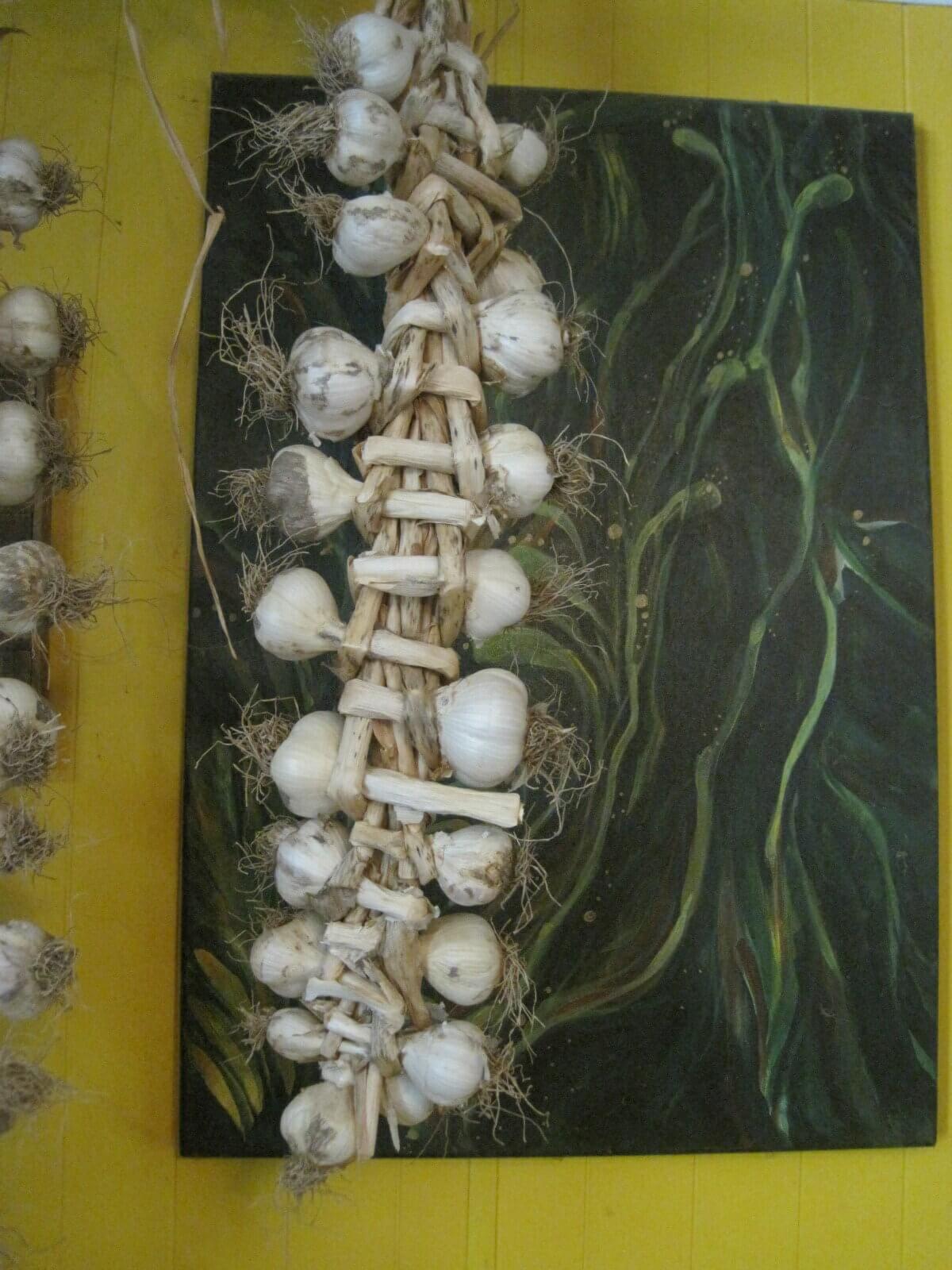When food preservation comes to mind, the first words to follow in the modern homesteader’s thoughts are likely “canning” and “freezing.”
These two methods to stop food decomposition have become THE go-tos when an ample harvest needs to be put up for later.
Both indoor freezing and canning, however, are quite new inventions: Canning has been around since the 1800s (and became widely used after World War II) and freezing with an in-home freezer was only accepted in the average home as recently as the 1940s. This begs the question … what did people do to survive the winter before they had convenient chest freezers in the garage, or rows upon rows of jarred peaches in the basement next to the Ball Blue Book?
These questions are easy to answer if you know the options that have been available for millennia, not just a few centuries. I have made it a personal mission to rediscover some of the traditional methods of food preservation beyond the canning jar and freezer bag. In my continuing quest to live off-grid, these ancient ways are my hope for nonelectrified food preservation. If I can’t access canning rings and don’t have access to a freezer, I’d still be able to feed my family. That’s a good feeling!
That said, this article is not meant to teach you the ins-and-outs of each process in their entirety. Though I am obviously aware of both methods, I’m not an expert in all of them by any means (future goals). Since each of these subjects deserves an article of their own, I have instead, provided some juicy bits of information and links for those looking to learn more.
Methods for Preserving Food
When these food preservation methods meant the difference between starvation and plenty, you’d better believe that people of the past refined these techniques like their lives depended on it. As such, not every method works perfectly for every type of food.
Though smoking may be perfect for fish or cheese, you’ll be hard-pressed to find someone who wants to eat smoked strawberries. Likewise, drying is excellent for sugar-rich fruits or long-storing seeds like wheat, but may be unsatisfactory or unnecessary when it comes to something like a squash (some varieties can last up to two years if stored properly). I will try to list which types of food are ideal for each method.
Drying

Drying is an instinctive method of putting food into stable storage, particularly fruits, seeds, and fish. Some plants do it all on their own. Seedheads, for example, left above withered winter leaves, offer food to nonmigratory birds, and pinecones drop to the forest floor, waiting for squirrels to find them and relish. It’s only natural that ancient humans quickly figured out that similarly removing the water from foodstuffs would preserve them until they were needed.
Drying has several benefits. First off, it removes water volume from the food item, meaning you can store vast amounts of nutrition in an easy-to-shelve, concentrated form. Nothing else is removed from the food, giving you all the mineral and nutrient content intact (though with some foods, the vitamin content may suffer from drying). It can also keep food in a stable state for years at a time, if stored properly. Finally, it can be done with the most rudimentary of tools and using the most basic of resources. The desiccating power of the sun and wind.
Though electric dehydrators are often employed for turning herbs, vegetables, and fruits into dried bits, they’re not imperative. They can only hold so much, and use up quite a bit of energy to accomplish their tasks. Instead, and especially if you live in a dry climate, make use of your natural, no-energy resources. Many foods, including seeds like beans, can be spread in a single layer on mesh trays and left in a protected, airy, warm place. If you have a screened-in porch, you have a gift for safe food dehydration. If you opt for drying outside, you’ll have to carefully cover your goods to make sure insects or animals don’t make off with your harvest.
Some Drying Tips
General drying guidelines include the following important practices:
- The faster the food can be dried, the higher the quality of the finished product.
- Only unblemished pieces or perfect whole fruits should be dried.
- Small, consistently-sized pieces will dry more dependably than large pieces.
- Allow cut fruit to drain before placing it on a drying rack.
- Don’t hurry the process. Herbs and vegetables should be brittle-dry, and fruit should be dry and leathery on the outside. When in doubt, let the food dry longer.
- When put in jars or bags, don’t seal them right away. Keep stirring the dried pieces for a few more days to ensure that they’re as dry as possible.
- Monitor your storage of dried goods regularly. Discard (and weep over) any moldy food. If the food seems moist but isn’t moldy, you can do another drying cycle on trays in a low oven to dry it out again.
You’ll often note that many modern drying recipes include the use of sulfur prior to the dehydration process. In all cases, the use of sulfur is to preserve the appearance of fruits, not protect their nutrition or to make them “safer” for consumption. In my opinion, any chemical that’s added to food purely for cosmetics is not a chemical worth consuming.
Some recipes also suggest to steam-blanch vegetables prior to drying. This process is meant to preserve color and flavor, but it is not necessary for successful drying, particularly for those who want to dry food without using energy. Consider the leather-britches beans that were so important to the Appalachian hill folk. Green beans were simply strung on a line and left to dry by the woodstove.

I offer another tidbit of information to those with access to the ocean. According to Centre Terre Vivante, fresh fish, hoisted 24 to 40 feet on a dedicated pole, are out of reach to flies. Perhaps those drying large amounts of goods may figure out a way to use that high-elevation tip to their benefit?
Smoking
Smoking is a variation on the drying theme, but one most often used for meats and cheeses. Fragrant smoke helps dry out and flavor the animal products being processed, and it works wonders to drive away any flies, pests, or any vermin who would otherwise help themselves in your larder-to-be.
I personally do not have experience with smoking (yet!) so I’ll direct you to the following resources, which are lush with just the sort of information you’ll need to get started.
Salting

Salting as a means of preservation really makes the most sense if you have access to large amounts of salt. Many ocean-dwelling cultures, therefore, made good use of this ample resource to preserve their daily catch and even some of their garden harvest. For people without natural access to salt, the salt trade became a lucrative business indeed. All of history and prehistory have some vital connection with salt if you look hard enough.
Salt naturally draws moisture from whatever it comes in contact with, which makes it similar, in some ways, to drying. You can read more about the scientific specifics of how it renders food safe to store at this article.
You may be most familiar with meats, and specifically, fish being preserved in this manner (which make sense, given their obvious ocean association) but there are several other notable foods that you might experiment with.
- Salt-cured egg yolks recipe
- Salt-cured lemons, which are often used in Moroccan and other North African cuisines.
- Salt-cured vegetables in the Iranian style
- Salt-cured garlic to add some zing to your cooking!
Fermenting

The process of teaming up with bacteria and yeast to transform raw food into something else is true culinary alchemy, in my opinion. Though most of us have (maybe) experienced fermented food through sauerkraut, all cultures throughout the world once fermented food on a daily basis. Fermentation made cheese, beer, bread, yogurt, pickles, and tongue — sparking blends of every imaginable type.
Furthermore, fermentation is not merely a flavoring technique: Lacto-fermented food is, to a reasonable extent, unable to spoil when kept in a cool environment. The fermentation simply progresses slowly, making the food slightly more sour with every passing week. Eventually, it may be too soft or sour to be palatable in large amounts, but it’s still safe. The living, helpful bacteria inhabiting the food will have banished any other form of harmful bacteria from colonizing.
Fermentation created some of the most unique and culture-specific foods around the world, such as Inuit kiviak, Japanese miso, Hawaiian poi, Iranian doogh, Nigerian iru, and many, many more. Though modern Westerners often view the old, traditional foods of various cultures with disdain or avoidance because they’re prepared in ways that don’t include a sterilized assembly line and a plastic package with a customer guarantee, there is a deep wisdom for survival that led to their creation.
The best resource I know on this subject is the unparalleled book The Art of Fermentation by Sandor Katz. You can read the book in full here, and it’s certainly worth the purchase.
My favorite fermenting tools are silicone tops that can fit on wide-mouth mason jars. They negate the need for the huge fermenting crocks used by self-sufficient folks of the past (make those a goal once you know what you’re doing) and allow you to have small-batch success relatively quickly. Once you’ve cut your teeth on your first ferments, I heartily recommend you expand to larger and more harvest-securing amounts.
Related Post: 40 Fermentation Recipes to Try Out
Outdoor Freezing
I know I mentioned in the introduction that freezing has only been around since the 1950s, but that is a half truth, I suppose. Perhaps it would be more accurate to say that indoor freezers have been used by the common folk since the 1950s. Freezing itself has been around since the beginning of time, of course. People in cold climates didn’t have to think hard to see that meat left outside in subzero temperatures would freeze solid and stay fresh until they were ready for it.
If you live in a cold climate where the temperatures dependably stay below freezing for the bulk of winter, then outdoor freezing is a natural choice for all your fresh meat storage. You’ll be following in the footsteps of the Nenets of Siberia, the Inuit of Greenland and Northern Canada, and the early pioneers and homesteaders of northern Alaska.
Here’s a good blog post that goes through some FDA concerns about using the winter outdoors for frozen food storage, but I personally think that thousands of years of traditional wisdom trump modern litigation.
Live Storage
Many of our foods don’t actually need to be processed much at all to stay delicious and edible for a long period of time. Properly stored, apples, garlic, onions, squash, and root vegetables can remain in a raw, living state for months; patiently waiting until their personal dinner bell rings. The key, of course, is knowing how to store them.
Mike and Nancy Bubel have written my favorite book on the long-term storage of fruits and vegetables Root Cellaring. Hidden within its covers are some immensely useful charts about the optimal storage situations for specific foods.

Well-cured winter squash, for example, are happiest in warm and dry circumstances. I store pumpkins and thick-skinned squash right in my kitchen through the winter months, and they keep well. Garlic is another plant that does best in warm(ish) and dry surroundings. Stick a head of garlic in the cool, damp refrigerator, and you’ll see why. It will sprout almost immediately.

On the opposite end of the spectrum, root vegetables like beets, parsnips, and carrots must have cool, damp conditions to last for any length of time. Those with a root cellar are in the best situation, as the stable temperature of the cool, dark earth is perfect for storing roots. Those lacking a cellar, can try to mimic one in an unheated backroom, a garage, or a buried, retrofitted freezer. The specifics of creating those long-storage environments are wonderfully detailed in Mike and Nancy’s book, which is available for free perusal here.
Further Reading
Now, one of the best resources I’ve ever read on this entire topic is a book of the same by some the Gardeners and Farmers of Tierre Vivante: Preserving Food Without Freezing or Canning. This inspiring book also includes methods for preserving foods in oil, vinegar, sugar, and alcohol, which I haven’t even touched on in this introductory article. I heartily recommend giving it a read and challenging your own modern perceptions on what it means to put up the harvest safely and deliciously.

